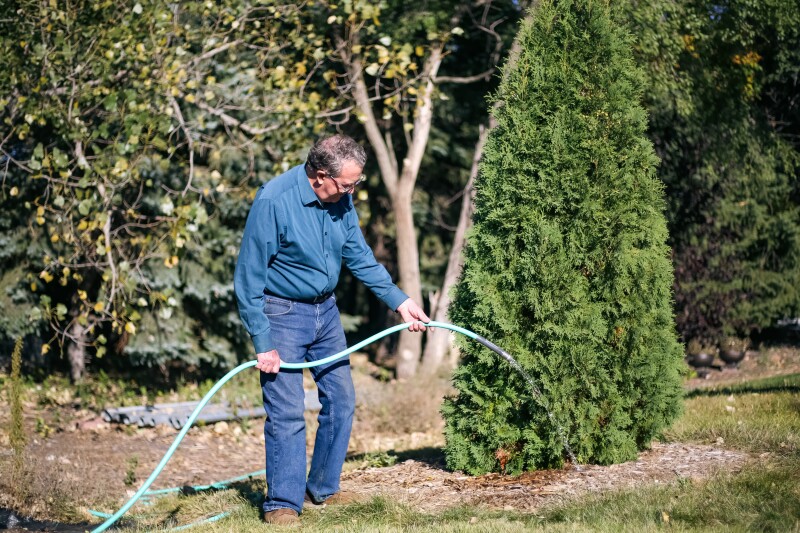As autumn approaches, ensuring that trees, shrubs, and perennials are adequately watered is essential for their survival through the winter months. With varying moisture levels across regions, many plants face the risk of becoming stressed due to dry soil. This stress can lead to significant damage during winter, affecting not only the plants’ health but also their ability to thrive in the following growing season.
Moisture-stressed trees, shrubs, and perennial flowers are more susceptible to winter injury, which can result in partial or total dieback. Secondary pests and diseases, such as borers and cankers, often target plants that have sustained winter damage. Healthy, well-hydrated plants are better equipped to fend off these threats. Furthermore, moist soil retains heat more effectively than dry soil, reducing the likelihood of winter root injuries.
Understanding Plant Hydration Needs
Young and newly planted trees are particularly vulnerable to dry conditions. Because they lack the extensive root systems of mature plants, they cannot access water from a larger area. According to the North Dakota Forest Service, tree roots can continue to absorb water until soil temperatures consistently fall below 40 degrees Fahrenheit. Regular deep watering in the fall encourages root growth, which is critical for long-term plant health.
To determine how much water to apply, consider the tree’s trunk diameter. As a rule of thumb, Colorado State University recommends providing 10 gallons of water for each inch of trunk diameter. For instance, a young, 2-inch diameter tree should receive approximately 20 gallons per watering session. Newly planted shrubs require different amounts; shrubs planted within the current growing season need 5 gallons of water twice a month in the fall.
Established shrubs also have their specific needs. Small shrubs under 3 feet tall should receive 5 gallons of water once or twice a month, while larger established shrubs between 3 to 6 feet tall require around 18 gallons monthly. Adjustments should be made in areas that have experienced early fall rainfall.
Effective Watering Techniques
When watering, focus on the area within the dripline of shrubs and around the base of trees, extending slightly beyond the canopy rather than concentrating on the trunk itself. For perennial flowers, an application of 2 gallons every two weeks is typically sufficient during the fall months.
Various techniques can be employed for effective fall watering, including sprinklers, soaker hoses, or allowing a garden hose to run slowly at the plant’s base. To gauge water application, a 5-gallon pail can serve as a useful measuring tool. Creating a slow soaker from a pail with several holes drilled into the bottom can also facilitate even water penetration into the soil.
In addition to watering, mulching around trees, shrubs, and perennials is highly beneficial. Mulch conserves moisture and helps maintain more stable soil temperatures throughout winter. The 5-5-5 rule is a practical guideline for applying mulch: create a circle with a diameter of 5 feet, apply a mulch layer 5 inches thick, and keep it 5 inches away from the trunk.
As the growing season draws to a close, prioritizing the hydration of your outdoor plants can significantly impact their health and resilience. Taking these steps during the fall will not only prepare them for the challenges of winter but also set them up for a flourishing return in the spring.


































































